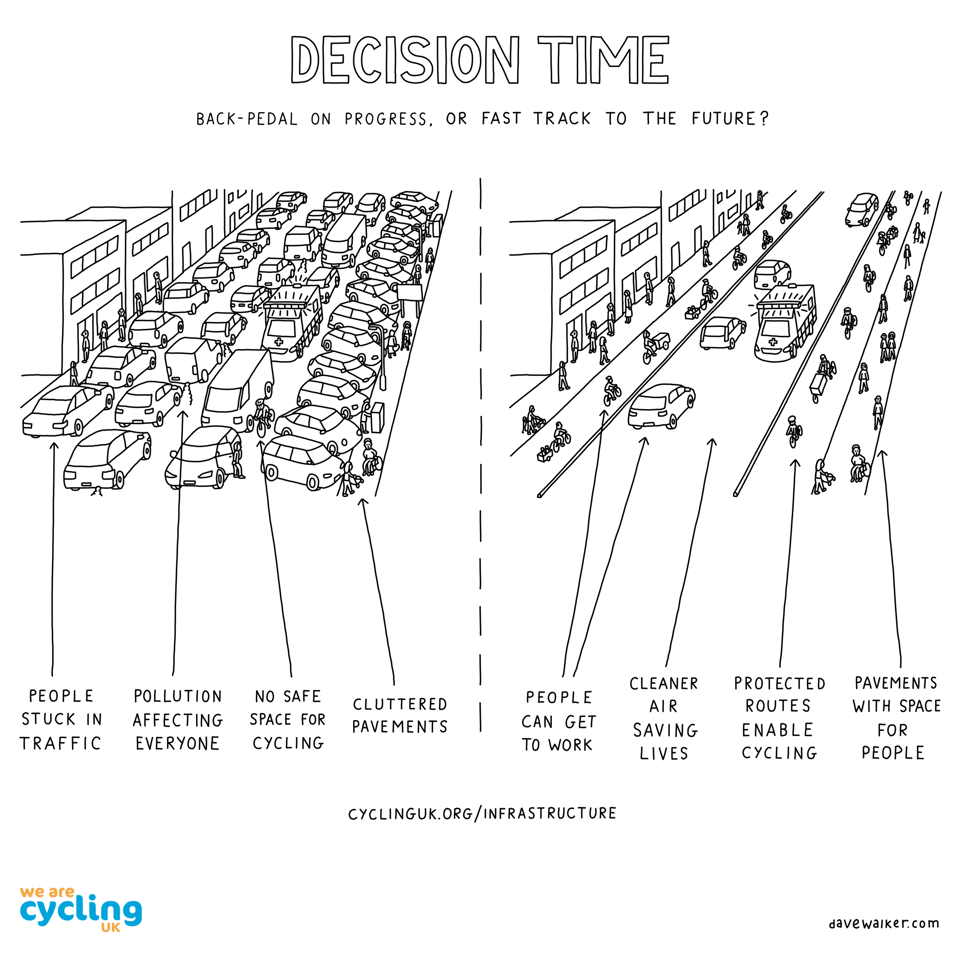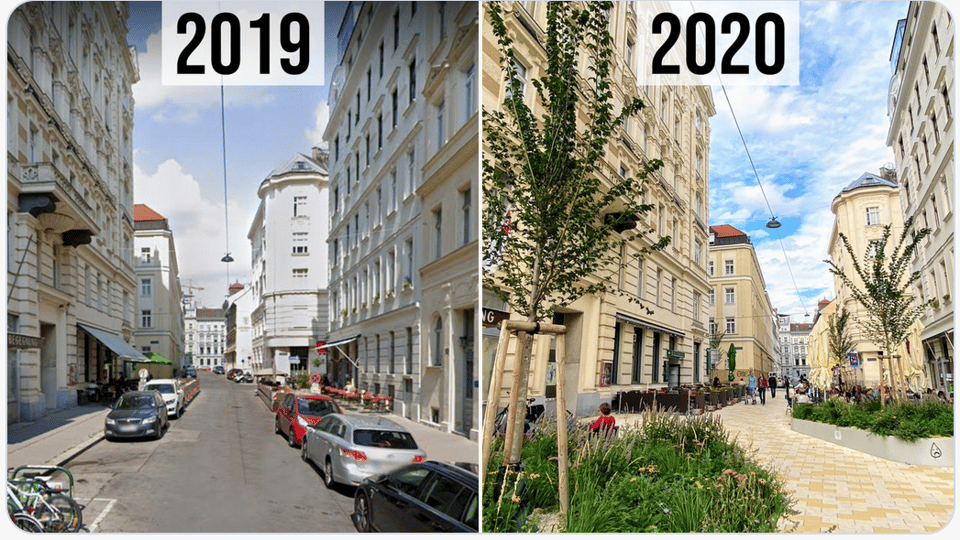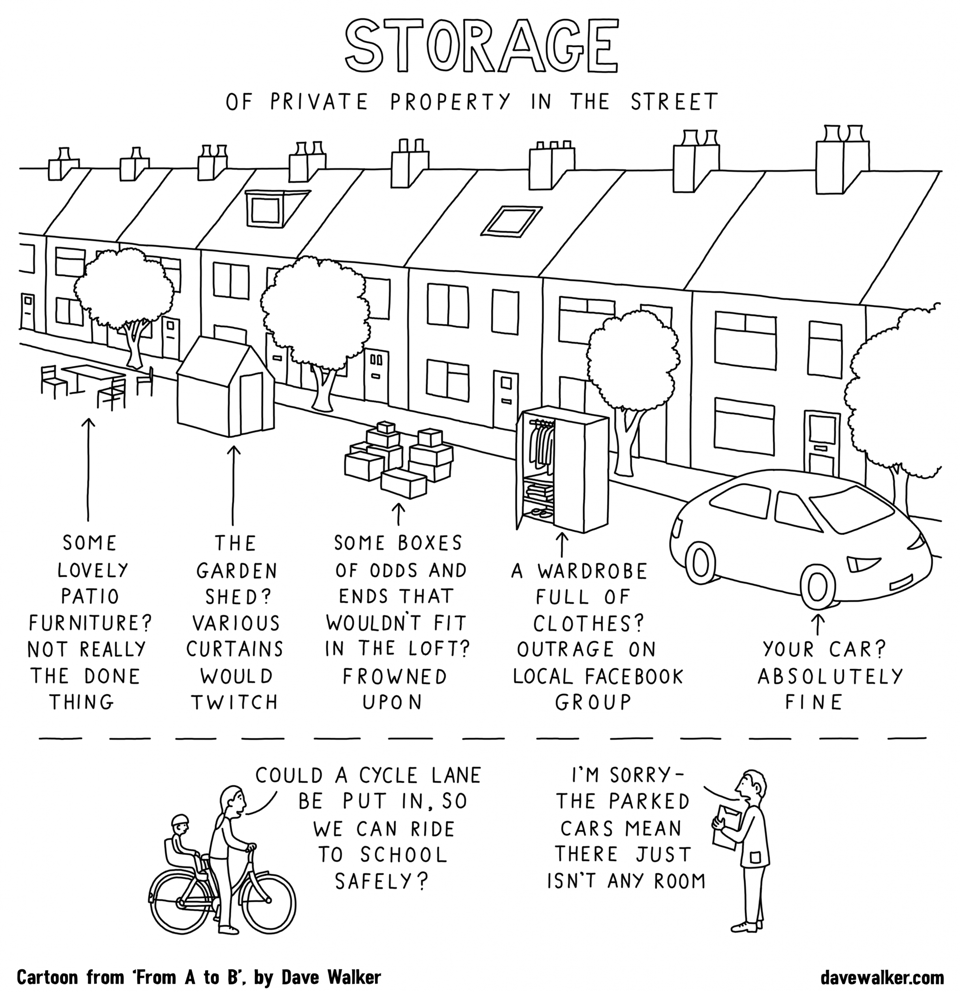Sky's Vic Park Newsletter Special Edition: Try this one weird trick for better cities
Why I’m suddenly obsessed with parking policy
I don’t drive and have never thought that much about parking until this year. Now I’m obsessed with parking policy. Why? Because right now our cities are planned and built around parking, and that has a huge impact on all of us.
Do you want climate action?
Do you want more public space for community gatherings, green canopy, and bike lanes?
Do you want fewer cars on our roads?
Do you want more rollable and walkable neighbourhoods?
Do you want to see more diverse and affordable housing in our community?
You can take action on all of these with one weird trick: changing parking policy.
To understand why, we have to start by understanding the current situation.
All homes and businesses in Western Australia are required to provided minimum amounts of parking.
Unless you’re close to good public transport you’re required to provide one off-street car parking bay for a one-bedroom house or apartment, and two parking bays for any home with two or more bedrooms.
In Victoria Park, shops are required to one parking bay for every ten square meters of retail floor area. Health, medical, and veterinary clinics must provide four spots for each consulting room. Restaurants must provide one spot for every 4.5 square metres of dining area. Child care centres must provide one spot for every five children enrolled. [UPDATE: I am delighted to edit this to note that in September 2024, we passed a new policy that removed car parking minimums for non-residential developments, in line with global best practice.]

This means that any time someone wants to build (or substantially renovate) a home or business, they have to start by working out how to design in parking – or consider whether they’re willing to take the risk of asking for parking requirements to be waived.
There's a bunch of research showing us that the current rules around parking:
Lead to higher levels of car ownership and car use,
Therefore also lead to more traffic congestion and more competition for parking,
Limit the availability of affordable housing, which means a less inclusive and diverse community,
Discourage the switch to more active transport and public transport use,
Increase the urban heat island effect,
Decrease the land available for green canopy and public space.
The current parking rules don’t:
Make cities more accessible,
Ensure you can get a parking spot when you need it, or
Stop people from clogging streets with parked cars.
Not convinced? Read on for the details and evidence! (I’ve provided handy headings so you can scan for to the sections you’re most interested in.)
What other cities are doing
Much as I’d love to say that removing parking minimums is all my own brilliant idea, it’s not new or original. In fact, so many places have decided to remove parking mandates (or even install parking caps!) that there’s a map of cities all around the world that have done it.
London replaced all parking minimum requirements with maximums in 2004. São Paulo introduced a raft of reforms including parking caps in 2014. Edmonton, Canada abolished parking minimums in 2020. All urban areas in New Zealand were required to stop imposing parking minimums in 2020. Austin, Texas – a city where people drive even more than the US average – removed parking minimums in 2023.
How parking reform can make cities more accessible
If we build cities that are accessible for people with disabilities, they’ll be more accessible for everyone. Removing parking minimums (especially in combination with attention to accessible parking) benefits people with disabilities who drive by reducing congestion and the competition for parking. It benefits people with disabilities who don’t drive by making housing more affordable. Removing parking requirements leaves more space in the city for rollable and walkable infrastructure like paths, curb cuts, pedestrian crossings, and safer streets.
Disability is complex: some people with disabilities rely on cars to get around, some people with disabilities are dependent on being driven, some people with disabilities cannot drive and want to have access to independent transport options. One estimate from the US is that around 39% of people with disabilities don’t drive at all, and those who do drive do fewer trips than the broader population. This article addresses the impact of parking reform on people with disabilities.

This is an excellent discussion that centres people with disabilities: if you only look at one source, make it this video.
Parking Reform is Climate Action

This is the crucial decade for climate action – we need to be taking bold steps towards a better future. Parking reform (boring as it sounds) is just that. As of 2022, one estimate was that road infrastructure is being subsidised by at least $24 billion a year in Australia (on top of what motorists pay in taxes). Parking is another way that we use public space – and public money – to subsidise and encourage driving.
Our Climate Emergency Plan notes that transport emissions account for 34% of the average Australian family’s greenhouse gas emissions. Even if every fossil fuel car was replaced with an electric car in the next few years (unlikely in itself), it would not be enough to meet our climate targets in time – we also have to own fewer cars and drive less. The energy use involved in creating and maintaining parking spots adds as much as 10% to the fossil fuel emissions of vehicles over their lifetime.
Some researchers have gone as far as arguing that replacing parking minimums with a cap on parking space is essential to meeting climate targets set out in the Paris Agreement.
Less parking means a more affordable and inclusive community
Designing our cities around mandatory parking increases the cost of housing - and blocks some housing development entirely. In Perth, one estimate is that it costs $1,160 to $3,900 per metre squared to build a basement parking spot. Some people will always want to drive – but we can give people more options for affordable housing if we don’t require everyone to pay for parking they might not use.
The cost of cars is places stresses on those who are least well-off. One Australian study suggests that forced car ownership is a significant issue for low-income households (which disproportionately include people with disabilities, single parents, older people, Indigenous people, and students, among others). Providing affordable housing in areas like Vic Park that are relatively close to public transport could reduce financial pressures on the households struggling the most.
This will make it easier for us to have a more diverse community, with more options for people who on lower incomes to live here. It will also make it easier for people who work in the area to live here.
Requiring less parking leads to less driving, making our streets safer and opening up public space for tree canopy and community connections
Our Integrated Transport Plan already sets out a commitment to encouraging people to use active transport or public transport as part of building a better community. This article provides a brief overview of the research on the many ways that decreasing driving makes our cities better.

Hang on, though! If we don’t require people to build houses and businesses with enough parking bays, our streets will be jammed with cars!
Just as building more roads doesn’t solve traffic jams, building more parking bays doesn’t solve parking problems. This is partly because providing more parking leads to people driving more - and therefore increasing the competition for parking. It’s also partly because having private off-street parking doesn’t stop people from storing their cars on residential streets.

A study from Melbourne found that “the majority (77–83%) of on-street residential parking use is by residents of detached housing [not apartments]. Most users of on-street parking have sufficient off-street parking, and half use garage space for storage or housing purposes.” This shows that allowing people to store their cars on the street is likely to be a public subsidy we are providing to those who are already more well-off in our community.
Of course, parking reform doesn’t mean that people will stop building parking bays – many houses, apartments, and businesses will still continue to provide parking at a level that they think will be used. (In fact, this has been such an issue that many places have had to introduce parking maximums.)
The solution to streets jammed with cars is not more parking. It’s good parking management – and luckily Vic Park not only has a comprehensive Parking Management Plan, it’s award-winning!
What next?
If you’re still reading, I’m delighted, whether or not you’re convinced. (The original version of this document was seven pages long. Please appreciate my editing.)
If you have questions or want more information about anything I've raised here, please let me know: s.croeser@vicpark.wa.gov.au
If you’re on board, you can become an advocate for more room for people and green spaces by talking to people in your communities – and those with power to shape policy about why parking matters.